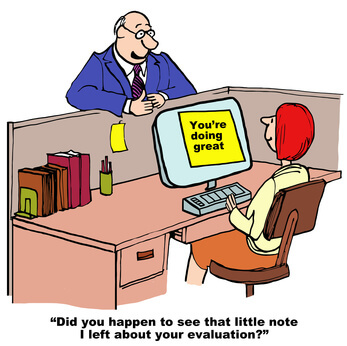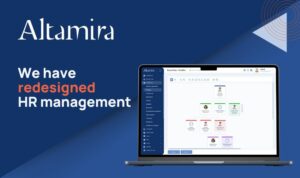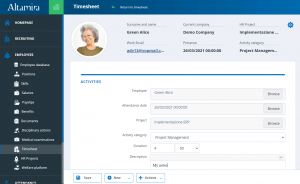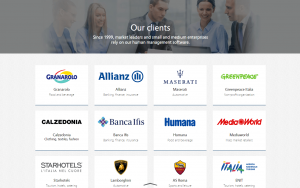“A goal without a plan is just a wish.”
This quote from the French writer Antoine de Saint-Exupéry offers a perfect summary of the contents of the present article.
Assigning goals to each employee is critical for the organic growth of your business. But if you want these objective to be understood, implemented, and ultimately effective, they must be the result of careful planning and negotiation, and of a comprehensive outlook.
Our experience in the digitization of performance management processes for many companies has led us to identify 13 best practices in setting goals for employees.
We think you may find them useful for the development of your own Human Resource practices.
1) Align individual goals with the company’s objectives
Always maintain a close correlation between the individual objectives of your staff and the overall goals of your company. This is important both in order to make employees feel more involved in the company’s successes and enable them to experience immediate positive returns for the work done, as well as to make sure that you are all pushing in the same direction.
2) Take into account their colleagues and their work team
An employee’s goals are closely tied to those of their colleagues. Before discussing this with the individual concerned, first analyze the situation of the whole team, in order to create a harmonious environment of objectives that support and enhance each other.

3) Agree on goals together with the employees
Bring your own ideas to the table, but also discuss them and negotiate them with the individual concerned. Objectives that are negotiated, as opposed to being imposed from above, are more readily accepted and are seen as incentives rather than external burdens. In addition, the discussion and the exchange of ideas will give rise to new considerations and improvements.
4) Set SMART goals
The acronym “SMART” (specific, measurable, achievable, relevant, time-bound) is often used in books and articles dedicated to performance evaluation and Management by Objectives. It offers a perfect summary of certain key characteristics which must inform employee goals so that they can become a decisive positive factor for the business. Accordingly, you should set objectives that are specific, easy to quantify in numerical form, within the abilities of the employee, relevant for the business and bound by deadlines.
However, be careful not to negotiate goals that are too narrowly focused on one part of the work, with the risk of negatively affecting the employee’s commitment in other aspects. For example, if one sets objectives for a salesperson that have to do exclusively with the acquisition of new clients, one runs the risk of pushing the salesperson to neglect the relationship with already existing clients.

5) Associate the goals with both tangible and intangible bonuses
It is fair to reward an employee who has successfully achieved their set goals.
However, a reward doesn’t necessarily have to involve cash to be motivating. There may be intangible rewards that would be perceived as even more valuable, such as a few extra hours or days off, a new office, new responsibilities, and so on.
By setting different levels of performance and bonuses for each level, you will be able to identify which of your employees is always aiming to improve, year after year.

6) Give special attention to new hires
Assigning detailed goals to a new employee is also a perfect way to help them understand what is expected of them.
We would advise you to start working on objectives as soon as the need for a new hire becomes apparent. In fact, goals are also useful during the recruitment and hiring phase, as they help you identify the right employee profile for the company.
Once the new employee is chosen and added to the roster, you will be able to redefine and refine the goals according to the employee’s specific skills and traits.
7) Periodically review and update employee goals
In any given year, events both internal and external to the company might occur that call for a course correction. For example, in the face of an unexpected and drastic budget cut for marketing and advertising, one may have to revise the sales objectives for the sales staff downwards.
As months go by, some goals might even lose their meaning entirely because of the occurrence of events that are impossible to predict. Do not hesitate to abandon such goals or to replace them with something more relevant, in order to show that you are giving constant attention to your human resources.
8) Monitor every development
Whichever tool you adopt for the evaluation of your employees, remember to keep track of any changes and revisions of their set goals.
This information is critical for the year-end evaluation and for the development of objectives for the following year.
9) Maintain maximum transparency
In any employee evaluation process, it is essential to always maintain the highest level of transparency. Therefore, each employee should participate actively in the negotiation of goals, and always have complete visibility over any changes made to them during the year. Even more, you can also include a self-assessment on their part.
From this point of view, the traditional evaluation forms might show serious limitations.

10) Celebrate each step
It is important to offer a reward for the achievement of the ultimate goals, but you can do more to increase employees’ engagement even further.
For example, you can also recognize and celebrate, in whichever form, the excellent work done by your employees when they achieve intermediate milestones.
11) Analyze the results achieved
At the end of the evaluation cycle for employees, go through the results they have achieved.
If you have used a personnel evaluation software, you will now have a treasure trove of data you can use to produce quantitative and qualitative reports. You can analyze what has worked well in detail, and learn from any mistakes made.
As a result, setting the goals for the following year will be even more accurate and effective!
12) Turn failure into an opportunity for growth
Sometimes, the set goals are not achieved. In these cases, it is important to not merely lay the blame on the employee, but to analyze the reasons for the failure and learn from it.
An employee evaluation path is also useful for the purpose of identifying gaps and inefficiencies in the company and acting to remedy them—by means of, for instance, a training plan, the redistribution of tasks, the purchase of new machinery and technology, a review of the company’s processes, etc.
13) Use a software solution for Performance Management
Transparency, interactivity, historical perspective, reporting—all these aims are difficult to achieve without the support offered by an employee evaluation software.
Using such software will simplify and speed up the work done by the Human Resources department and by managers, as well as offer them more control over the evaluation process.
Moreover, the adoption of modern and interactive software reinforces the message that a company wants to convey to its employees: namely, that the optimization of human capital and meritocracy are central to the corporate strategy, in which the employees play a leading role.
Feature image: ©freshidea/Fotolia; Other images: ©cartoonresource/Fotolia.




























































































